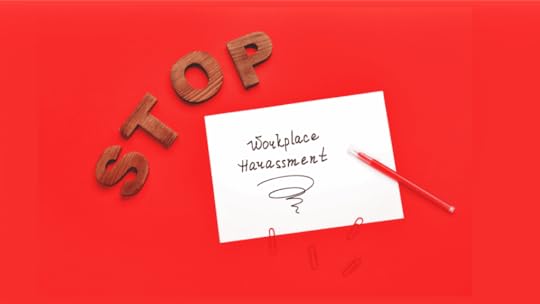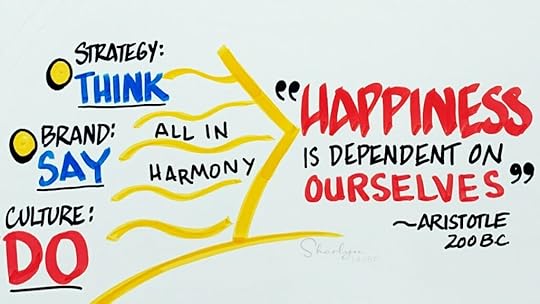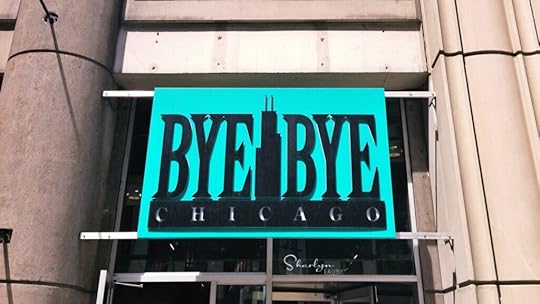Sharlyn J. Lauby's Blog, page 48
September 29, 2022
Bookmark This! Paid Time Off Edition

Estimated reading time: 3 minutes
A reader recently sent me a note regarding “use it or lose it” time off policies.
My company, located in Oregon, gave me three-weeks of vacation at beginning of year. Now they are forcing me to use or lose by year end. Is it legal in California?
There are lots of unanswered questions here. We don’t know if the reader’s vacation situation is based on a long-standing policy or a new one. We don’t know if the person was told about a “use it or lose it” policy when they received their vacation. I assume the employee is asking about California because they’re located there? But we would want to confirm that for sure. And we need to know both Oregon and California state laws regarding employee time off.
I realize that I’m not directly answering the employee’s question, but we’ve discussed the aspects of time off in previous articles. I’m hoping this list of articles might help someone formulate the questions about the policy they should ask their human resources department. And it could help HR departments when they are communicating with employees about benefits.
Front Loading Paid Time Off: Pros and Cons
Many organizations are reevaluating their employee benefits offerings in light of the pandemic. With more employees working remotely, companies are looking at the benefits they offer in a physical office environment versus the ones that can be utilized virtually. They’re also looking at how employees can take time off.
UNLIMITED VACATION: 6 Things to Consider
It’s also important to note that unlimited vacation isn’t a cost-cutting measure. Yes, moving to unlimited vacation means that those big vacation accruals are gone. But smart companies are shifting those funds toward other benefits like wellness programs, student loan repayment programs, and parental leave (just to name a few.) With the increased challenges in finding qualified candidates, unlimited vacation could create a win-win.
Managing Paid Time Off for Remote Employees
Creating an equitable work arrangement means transitioning to a different type of accountability. It’s less focused on time and more on results. Managers should be given the training and tools to effectively handle these situations. Employees should be informed of new performance standards. We’re not just talking about paid time off, but on everything.
How to Turn a New Company Policy from Negative to Positive
Employees like time off. According to an article in Harvard Business Review, flexible hours and vacations are the two most popular employee benefits after health insurance. If organizations want to remain competitive, they need to offer benefits that employees want. You would think that any benefit that gives employees more time off would be met with cheers and adoration.
Considerations When Eliminating Employee Benefits
Benefits are a tricky and sometimes emotional subject. They represent value to employees, so organizations need to handle them with care. Whenever an employer decides to eliminate a benefit, there is a calculus that the employer will perform to weigh the savings from eliminating the benefit against the cost in employee relations and legal risk.
It’s not unusual for employee benefit policies to change and evolve over time. And with the increased amount of remote and virtual work, it’s possible for employees to have questions about how different state laws apply to them. When employees have questions about their benefits, they should feel comfortable going to human resources to get answers. HR departments should start to anticipate these types of questions and proactively inform employees, so they’re not caught off guard.
Image captured by Sharlyn Lauby while exploring the streets of Key West, FL
The post Bookmark This! Paid Time Off Edition appeared first on hr bartender.
September 27, 2022
Harassment Prevention Training Helps Create Safer Workplaces

Estimated reading time: 4 minutes
(Editor’s Note: Today’s article is brought to you by our friends at HRdirect , a trusted source for employee-related compliance, administration, and motivation tools. They serve as a one-stop shop to make employee management easier. Enjoy the read!)
Organizations must create safe work environments for their employees. I know we’ve spent a lot of time talking about workplace safety in terms of COVID and the pandemic, but I want to address another equally important subject – sexual harassment.
According to a survey from Stop Street Harassment, 81% of women and 43% of men report experiencing some form of sexual harassment. Of those women, 38% say they were harassed at work. In addition, a 2020 report by the U.S. Equal Employment Opportunity Commission (EEOC) shows that 55.8% of retaliation complaints occur after reporting a sexual harassment claim. I don’t have to explain that this doesn’t contribute to the goal of creating a safe work environment for employees.
The question becomes what we can do to change it. And it starts with education. But before I get into some specifics about harassment prevention training, there are three things I want to address about building a good foundation for harassment prevention training.
The management team needs to be onboard with the program. And when I say the management team, I mean the entire management team. There should be zero tolerance for harassment and zero tolerance for retaliation. Period. While harassment prevention training is part of the organization’s compliance strategy, it could be helpful not to treat it like a “watch this and check off a box” activity. This is about truly understanding the information.Yes, harassment is a legal matter. But that doesn’t mean the goal for harassment prevention training is to teach people the law. Be strategic in citing the law so it has the proper impact.Okay, now that we’ve talked about how to build a good foundation for harassment prevention training, let me tell you about a program that can help your organization achieve these goals.
Our friends at HRdirect offer several different harassment prevention programs to suit your operational needs. Here’s an overview of what they provide:
Federal, State, and Local: Some employers erroneously believe they only need to provide harassment prevention training to employees in states and local jurisdictions that have statues requiring it. Just as a reminder, there are currently several geographic areas that have specific training requirements (i.e., CA, CT, DE, IL, ME, NY, Chicago, and NYC).
While these states and cities have statues requiring harassment prevention training, other federal, state, and local laws, along with court decisions have made it clear that employers should provide harassment prevention training to all employees (in all states). Organizations will want to keep in mind if they have a remote workforce, that they want to make sure employees receive the right training.
Manager and Employee: Many organizations offer harassment prevention training for employees plus an additional session for managers, who might have an employee express concern to them.
Organizations will want to make sure that all employees know what to do. An organization with a small management team, might not have the resources to design and deliver their own training programs. Purchasing a program could be a great option.
In-person, Online, and Self-paced: It only makes sense to have the ability to deliver training in multiple formats. Especially with today’s technology and flexible workforce options. Employees who are working remotely do not have to wait to be scheduled for an in-person training session. Organizations can offer options and continue to make workplace safety a priority.
Knowledge Transfer: HRdirect’s harassment prevention training programs include quiz questions to confirm the transfer of learning. This allows the organization to hold employees accountable for the content.

What I really like about HRdirect’s harassment prevention training is the level of personalization it brings to the organization. We can make sure we’re delivering the right content. To everyone in the organization. In multiple formats so it stays engaging. With quiz questions to reinforce learning. This keeps the organization from falling behind on compliance because they “don’t have enough people for an in-person training class”.
Harassment prevention is an important topic for organizations and individuals. Give it the respect and attention it deserves. If you want to learn more about HRdirect’s harassment prevention training options, check out their website. Also download this eGuide on “Recognizing and Preventing Harassment: 5 Scenarios to Test Your Awareness”. I thought this might be a great conversation starter within the organization about what harassment is and the risk it could pose to the organization.
The post Harassment Prevention Training Helps Create Safer Workplaces appeared first on hr bartender.
September 25, 2022
Is the Problem with Staffing or Scheduling – Know the Difference

Estimated reading time: 3 minutes
Years ago, I worked on a project where the client company was convinced that their problem was staffing. They kept telling everyone that they didn’t have the right people. And that employees weren’t being trained properly. After a thorough analysis, the problem was discovered to be with scheduling. Oh sure, the company could have used a few more high-performing employees and some better training. But the bottom-line was that employees weren’t being scheduled when the operation needed them the most.
This story always reminds me that staffing and scheduling are two different things. Staffing is about finding the right people to do the work. And scheduling is about making sure they show up at the right times. Both are equally important.
As the labor market continues to challenge organizations, this will be a real issue. If you have one employee who completes a specific task every week, what is the company going to do if that person resigns tomorrow? While the company can simply dump the work on another employee’s desk, that doesn’t mean they’re the best person for the task. It also doesn’t mean it’s good for employee morale.
Add to the staffing situation the fact that nobody wants bad scheduling – – not organizations or employees or customers! Companies don’t want the lost productivity. Employees don’t want to be bored or overworked. Customers don’t want a frustrating experience. Organizations should look for ways to improve their scheduling processes using operational and technology tools. It’s a win for everyone!
Use operational planning tools to understand peak and slow times. Every organization has busy and slow times. Understanding the operation will keep departments from over- and under- scheduling. It might identify times when a freelancer or contractor could be beneficial, versus hiring full-time staff. Not only will it help the business run smoothly, but it keeps managers from calling employees in or sending them home when they may/may not be needed.
Identify key tasks that must be completed during operational shifts. Think about what needs to happen during each shift in your organization. I’m reminded of my time in the hospitality industry when we created opening and closing checklists. The checklist served as a reminder for what needed to happen. And it became more of a team responsibility versus an individual one. An employee might do 1-2 items. Another was responsible for 2-3 items.
Talk with employees about their scheduling preferences. Not everyone wants to work Monday through Friday from 9a to 5p. And not all employees want holidays off. Managers should take the time to get to know their employees and when they like to work. Then give employees access to modern workforce technologies that allow employees the flexibility to facilitate shift trades and last-minute coverage. Think of it as creating a scheduling partnership.
Encourage cross-training. If you’re business runs into a lot of “last-minute” requests, consider cross-training employees. Instead of calling someone in to handle a last-minute task, organizations can ask someone to stay an extra hour or reprioritize their workload. Cross training can be invaluable when an employee calls in sick or takes vacation. This could also be very helpful with internal mobility opportunities.
A big part of running a smooth operation is making sure that the right people are working at the right times. It’s also making sure that “back-ups” are in place so those “right people” can take a day off, go to an all-day training event, or deal with an emergency. Employees can focus on what they’re doing while at the same time, the company can focus on running the business.
Image captured by Sharlyn Lauby after speaking at the SHRM Annual Conference in Orlando, FL
The post Is the Problem with Staffing or Scheduling – Know the Difference appeared first on hr bartender.
September 22, 2022
Company Political Views Can Impact Recruitment Results

Estimated reading time: 3 minutes
I saw a recruitment statistic in Harvard Business Review saying that nearly one-third of U.S. job seekers decided not to apply for a job based on the organization’s political affiliation or stance they took on a specific issue. Honestly, it’s not surprising. Employees want to know that they’re working at an organization they can be proud of. Part of that “pride” comes when organizations stand up for causes that employees believe in.
A couple of months ago, HR Brew had a similar article indicating that nearly half of employees surveyed felt their organization should speak out on environmental, social, and political issues. The survey was conducted after the U.S. Supreme Court overturned the Roe v. Wade decision. Only 15% of survey participants felt their employers should speak out less. The article went on to say that part of the reason organizations weren’t being more vocal is because they were just plain tired.
It made me wonder if some organizations are experiencing a level of burnout that’s preventing them from taking on these issues. I’m not dismissing individual burnout. We know it exists and needs to be addressed. Of course, if we have a lot of burnt-out individuals, could that lead to organizational burnout? I’m defining organizational burnout here as this situation where the company can’t effectively deal with matters of importance. Maybe it’s a form of organizational dysfunction?
I’m tossing this conversation out there because organizations need to think about their reluctance to address social issues and their recruiting strategies. If they’re too tired, burned out, etc. to address issues that are important to employees, well…those employees might think about leaving. And if they do address issues with some sort of half-baked reply, that can have the same result. Candidates and employees might feel the organization isn’t taking social matters seriously and say to themselves, “If the company doesn’t take this seriously, what else don’t they take seriously?”.
I understand that some organizations are slowing down their recruiting and hiring right now. But that won’t always be the situation. Other organizations might say, “We’re going to stay out of politics.” and deal with the consequences. And that is an option.
Another option is for the leadership team to have a conversation about what issues they want to support, what they don’t want to support, and most importantly why. We all know that there are political and social issues that could make good business sense to support (or not support) based on your industry or location. Instead of declaring the company a “politics free zone”, now may be the time to be strategic about it.
Once the organization has a plan, let employees know what the company supports and isn’t prepared to support along with why. Granted, some employees might not agree with the company’s rationale, but my guess is they will appreciate knowing the company’s position. Also, keep in mind, that if employees understand the company’s position, they can articulate it when they’re chatting with a friend about applying with the company.
There have been plenty of comments in the media about how organizations can’t stand on the sidelines anymore. And I agree with that. Instead of letting others drag the company off the sidelines…you do it. On your terms. That means finding time to talk internally about these issues – even when you’re tired. Oh, and while you’re at it…have a discussion about why you’re tired all the time. This topic isn’t going to go away so finding a way to deal with it the way you want is important.
Image captured by Sharlyn Lauby while exploring the streets of Washington, DC
The post Company Political Views Can Impact Recruitment Results appeared first on hr bartender.
September 20, 2022
Your Managers are Quiet Quitting Too

Estimated reading time: 4 minutes
I want to thank everyone for the notes and support after publishing “Quiet Quitting is Nothing New: What It Is and What You Can Do About It”. I appreciate you and am glad to hear that the article was helpful.
Regardless of what we label it, the concept of quiet quitting should concern organizations. According to some new research from the Society for Human Resource Management (SHRM), 51% of HR professionals are concerned about quiet quitting. 70% believe it will have a negative impact on employee productivity, which is an important organizational priority.
So, the question becomes, “What can organizations do about it?”
I believe the answer lies with management. Some people want to believe that quiet quitting is about employees, and specifically about them being lazy and poor performers. It’s not. I tend to think in alignment with this Harvard Business Review article that “Quiet Quitting is About Bad Bosses, Not Bad Employees”.
In the same SHRM research, nearly half (45%) of HR pros said their organization has struggled to motivate and engage employees. While some of the responsibility for motivation and engagement belongs to the employee, much of it belongs to management.
Managers are responsible for staffing their team, organizing responsibilities, planning the work, controlling resources, and leading the group. That’s the classic definition of management. If managers are unable to do these things – because they’re understaffed, overworked, burnt-out, undertrained, and faced with a budget crunch – then that impacts their ability to build positive working relationships with their team. It keeps them from training and coaching employees.
Here’s the reason I’m bringing this up. If managers are frustrated and/or exhausted because they feel that they aren’t getting the tools and support to be successful, then they might be are quiet quitting too. And if an employee sees that their manager doesn’t care, they might ask themselves, “Why should I care if my manager doesn’t?”.
I don’t believe that organizations are intentionally trying to hurt their managers. But sometimes the little “do it and do it now” and “make it happen” comments can add up. Managers feel an intense pressure to deliver results. Unfortunately, the pressure can have the opposite effect. Managers get overwhelmed and stressed. Organizations need to take an intentional look at their management practices. Here are a few places to start.
COMPENSATION: One of the best things about being a manager is also the worst. Most managers are exempt from the Fair Labor Standards Act (FLSA), which (basically) means they’re paid a set amount each pay period. If a manager shows up to work late, not a big deal because they don’t clock in/out. However, the reverse is also true. Need someone to stay an extra hour late? The manager isn’t paid extra. Organizations need to make sure that they are not abusing exempt status.
WELLBEING: Speaking of abusing exempt status, managers need to take care of themselves. I’ve said in the past that I’ve never seen a stressed-out manager with a calm team. It’s true. When a manager is stressed, everyone around them feels it. Managers will do their best work when they are able to care for their wellbeing.
TRAINING: And while we’re talking about managers doing their best work, let’s add that managers need to receive the necessary training. This might be in the form of classroom training, coaching, mentoring, etc. but they need to get the tools to do their jobs well. One big mistake I see companies make is promoting the most technically competent person to management and then not giving them the rest of the tools to effectively do the manager’s job.
Managers play a critical role in organizational success. They are responsible for building engagement and making sure that employees do the work to the company standard. They can’t do that if they don’t feel respected and supported in their role. This can permeate the entire organization. Organizations should be asking themselves whether they have an issue of managers quiet quitting and what impact that has on the rest of the workforce.
Image captured by Sharlyn Lauby while exploring the streets of Chicago, IL
The post Your Managers are Quiet Quitting Too appeared first on hr bartender.
September 18, 2022
Employee Monitoring Shows a Lack of Trust

Estimated reading time: 3 minutes
There was an article recently in The New York Times titled “The Rise of the Worker Productivity Score”. It’s an interesting read about employee electronic tracking, monitoring, and ranking. Companies are saying that this is being done to ensure efficiency and accountability. The reality is that nothing says screams “I don’t trust you” like telling an employee you’re monitoring their activity.
I’m going to assume that anyone monitoring their employee’s activity has checked with their employment attorney to discuss the legal advantages and disadvantages of this decision. I want to talk about the workplace challenges.
PRODUCTIVITY: The NYT article included productivity in their title, so I want to start with that. I’m totally cool measuring productivity. But productivity is not solely calculated based on time. Factors such as manager behavior, equipment, safety, company policies, and worker skills must be considered too. An employee who doesn’t receive the proper training will take longer to do the work. An employee who has outdated equipment will have to create workarounds and take longer to do the work. You see my point.
PERFORMANCE: Another factor that organizations must consider is how well they’ve set the employee up for success in terms of understanding the company’s performance standard. Do employees know what acceptable performance looks like? Have they been trained to the company’s performance standard? This is going to include current job descriptions, comprehensive onboarding, and relevant training programs. It also means that manager / employee communications must be clear.
FEEDBACK: Speaking of the performance standard, are employees receiving regular feedback about their performance? This is where the accountability piece comes in. Managers should be able to provide employees with feedback – positive and corrective – about their performance based on results. Productivity is about producing something. Employees can be held accountable for whatever they are producing. If an employee isn’t producing enough, you don’t need monitoring to figure that out.
HOWEVER, if the concern is that employees are producing enough but the organization believes that maybe they could produce more…then IMHO, that’s where the monitoring conversation comes in. The company is trying to figure out where they can get more production without hiring more people and paying more in salary. They could ask employees about their workload, but they don’t trust employees to give them the answer. Yes, call me cynical. It’s exactly this type of thinking that started the quiet quitting trend.
RANKING: In the past, many organizations have used performance rankings and later abandoned the practice. There’s a good reason why. Here’s an example: If we have a department of ten salespeople, and we rank them based on sales, then one salesperson will be the best and another the worst. For this example, let’s say Leonard is the worst. He sold $10M last quarter with a $1M goal. Yep, that’s right. The company’s lowest ranked salesperson blew their goal out of the water. The problem isn’t them. It’s the goal, which was probably set by the company. That’s the problem with ranking.
There’s one other thing that I want to mention. This whole conversation about monitoring and ranking shouldn’t be based on where the employee is located. Frankly, if there’s a concern about a remote worker having more free time than an onsite worker, the answer isn’t monitoring. Maybe it’s letting more people work remotely. Or training managers how to better manage their remote teams.
There’s nothing wrong with wanting to know that employees are doing the work to the company’s quality standard. And there’s nothing wrong with holding people accountable. But monitoring isn’t the solution. It’s treating people like adults, with respect, while holding them accountable for the work.
Image captured by Sharlyn Lauby after speaking at SAP Ariba Live in Barcelona, Spain
The post Employee Monitoring Shows a Lack of Trust appeared first on hr bartender.
September 15, 2022
3 Ways You Just Might Be Contributing to Your Own Ageism

Estimated reading time: 4 minutes
It pains me to say this, but ageism exists. Even after countless articles talking about the advantages of hiring older workers, ageism still exists. But I want to add something to the conversation about ageism.
I’m starting to see an interesting trend where the discussion about ageism is concerned. And that’s ageism might not be totally “the organization’s fault”. It might be time to ask ourselves if all the talk about ageism is somebody else’s fault or is it possible that we are creating our own self-fulfilling prophecy?
To this point, I came across an article on the site Fistful of Talent titled, “Ageism is Real – And It’s Your Fault”. The article talks about the things that we do as individuals that contribute to the “old person” perception. You know, like “I don’t have time for that technology stuff.” Or “Oh, those Millennials….” My takeaway from this article was regardless of your physical age, if you act like the stereotype then people will assume you are one.
Next Avenue also published an interview titled, “Are Concerns About Age Discrimination by Employers Overblown?”where the conversation focused around whether ageism is real. The idea being with a highly competitive employment market, at some point, organizations must realize that older workers are valuable. Again, my takeaway from the article was it’s important to keep current.
Regardless of your age, there are three things that we need to consider to ensure we’re not contributing to our own ageism.
Believing your own negative self-talk. Self-talk is defined as those messages we tell ourselves. Think of them as those little voices inside our head. Sometimes we say them out loud, but often not. Bottom-line: Our self-talk is incredibly powerful. Especially when we say things like, “I can’t do this because I’m old.” Granted, there might be things that we can’t do anymore, but that’s not the case for everything.Let me add one more thought. There’s a big difference in deciding you don’t want to do something because you’re older and you can’t do it. Mr. Bartender and I have said to ourselves plenty of times, “been there, done that, and we don’t need to do it anymore”.
Stopping your own learning. This is a big one. You don’t have to earn a college degree or spend lots of money to learn. Just because you turn 40, 50, 60, or 70 doesn’t mean you can’t take a class, listen to a podcast, watch a TED Talk, or read a book. If there’s something you want to learn, do it. Especially, if you’re thinking about switching careers as you get older.If you haven’t checked it out, sites like Coursera and edX offer massive open online courses (MOOCs). Most of them are free and have a wide variety of topics. If you have a budget, MasterClass offers programs from some very famous people. Whatever you decide is fine. Just keep learning.
Not networking across generations. I believe this last one is harder than it looks. If you have younger family members, then you might be able to chat with them. But if you don’t (or you would prefer not to network with family), think about how you can gain exposure to different points of view. Regardless of who you speak with, it’s important to interact with a diverse group of people.Maybe think about mentoring as a way to share your expertise and learn at the same time. There are lots of organizations that are regularly looking for mentors. It’s also possible that your current employer might have a mentoring program that you can sign up for.
Individuals have some decisions to make as they age. And one of the biggest is deciding how to accept aging. If you want others to see you as a contributor, then act like it. Please notice I didn’t say you should start acting “young”. People need to accept aging for what it is. But that doesn’t mean someone isn’t able to bring value. Send the message and demonstrate that you can.
Image captured by Sharlyn Lauby while exploring the streets of Washington, DC
The post 3 Ways You Just Might Be Contributing to Your Own Ageism appeared first on hr bartender.
September 13, 2022
Employment Tests Can Help Confirm Candidate Skills

Estimated reading time: 4 minutes
(Editor’s Note: Today’s article is brought to you by our friends at HRdirect , a trusted source for employee-related compliance, administration, and motivation tools. They serve as a one-stop shop to make employee management easier. Enjoy the read!)
Many organizations use employment tests and assessments. The reason is because they deliver business results. In an article from the strategy and research group Aberdeen, hiring managers that use employment tests report 36% more satisfaction with their candidate selection. In addition, the article states that companies using pre-hire screening tools report a 39% lower turnover rate and are 24% more likely to have employees who exceed performance goals.
Organizations report these types of results because an employment test can help determine that a candidate has the skills for the job. The Society for Human Resource Management (SHRM) recently released new research that shows more than half of employers (56%) use pre-employment assessments as a way to gauge a job applicants’ knowledge, skills, and abilities.
So, follow my logic here – employment tests are a proven tool to help determine if a candidate is qualified for the job. And using tests in the recruitment process – to determine if a candidate is qualified – helps the hiring manager make better decisions. When hiring managers make better hiring decisions, then employees perform well and stay with the company.
I think it’s really important to add that the reason employment tests work is because they are valid, reliable, and align with its purpose. We’re not talking about back of a napkin quizzes. As a quick refresher:
VALID means that the test measures what it’s supposed to measure. For example, an organization might require that an accounting clerk know QuickBooks. A validated test would be able to report on a candidate’s level of QuickBooks knowledge.
RELIABLE means that the results are consistent. For instance, a customer service representative at a call center needs phone and online chat skills. A reliable assessment would provide a consistent report of the candidate’s customer service skills. If the candidate took the assessment twice, the results might not be exactly the same, but they would be close enough to determine the candidate’s skill levels.
The third piece is that the test aligns with its PURPOSE. For example, a test used in recruitment needs to align with the role that the candidate is being considered for. The organization should be able to explain the reason that they’re asking a candidate to take an assessment, whether that’s directly to the candidate or to an outside agency. You know what I mean. If you have any questions, don’t hesitate to bring your legal and risk departments into the conversation.

As a side note, the good news about validity, reliability, and purpose is that valid tests are reliable but reliable tests aren’t always valid. I always remember this because “you can be consistently wrong”. Ha.Ha.
I’m talking about tests today because our friends at HRdirect not only offer employment tests BUT they include the validation at no additional cost. Organizations can order the tests they need, no subscription required. The test can be taken onsite or online. The organization is provided with easy-to-read reporting that they can use in their recruiting selection process.
Finding qualified candidates will always be a challenge. Organizations are always on the lookout for ways to confirm a candidate’s knowledge and skills. Employment tests do that. But we must verify that the test is valid and reliable. The last thing we want is for someone to question our processes. And if by chance they do, we can feel comfortable that we’re using the right tools.
If you’re interested in learning more about employment tests, check out the HRdirect testing website. You can try a test for FREE. There are a couple of great downloads about implementing a testing program and content validation. And finally, there’s an on-demand webinar about the benefits of using employment test.
The post Employment Tests Can Help Confirm Candidate Skills appeared first on hr bartender.
September 11, 2022
Process Organizational Change Using VUCA

Estimated reading time: 3 minutes
I saw a tweet during this year’s Society for Human Resource Management (SHRM) annual conference that reminded me of the value in the acronym VUCA. It stands for volatility, uncertainty, complexity, and ambiguity. Wikipedia says VUCA was introduced by the U.S. Army in the 1990s. In recent years, it’s been used in strategic leadership conversations. Basically, it means the world is a little wild and crazy. I’m sure we’ve all felt that way about our business lives at one time or another.
SHRM has posted a framework for addressing VUCA situations. It’s worth checking out. There are several ways that VUCA finds its way into our professional lives:
V = volatility. The challenge is focused on making organizational change and the speed of change.
U = uncertainty. This is about lack of predictability and staying aware of what’s happening.
C = complexity. It’s understanding the cause and effect of issues facing the business.
A = ambiguity. It presents opportunities to misread a situation or confuse messaging.
The idea isn’t to use VUCA to replace strategy. It’s to consider it a part of strategy preparedness. A few years ago, Harvard Business Review published a series of articles on VUCA, outlining some of the activities you can do when faced with a VUCA challenge or situation.
In a volatile situation, communication is essential. The organization will be looking for knowledge and information. The more people know, the better they can process the change.
With uncertain situations, demonstrate flexibility. While the strategy isn’t predicable, it shows that it can be handled. And, seek out different perspectives which might help reframe the company’s point-of-view in managing change.
For complex situations, take time to think and process the dynamics of the issue. It might offer new insights or options. Also, bring in new collaborators to add a fresh perspective.
Lastly, when ambiguous situations arise, listen actively to the details then consider taking a scientific approach of hypothesizing and testing experiments. It can logically narrow options and surface discoveries.
VUCA might also be a great tool for employees to use in the operation and relatively easy to teach them (versus some other more complicated models.) Organizations could educate employees on VUCA in orientation or onboarding. Then employees can use it regularly as they’re going through problem solving and change.
Organizations can use VUCA to triage challenges that they face regularly. As in, we have Challenge A. Is it volatile? Yes. Let’s make sure we have a good communication strategy in place. The business world continues to move faster and change constantly. As business professionals, we have to find a way to process that organizational change. VUCA might help us understand that communication, flexibility, collaboration, and experimentation are the way.
Image captured by Sharlyn Lauby while exploring the streets of Kansas City, MO
The post Process Organizational Change Using VUCA appeared first on hr bartender.
September 8, 2022
What Is the Best Way to Celebrate an Employee Birthday [POLL]

Estimated reading time: 3 minutes
Office celebrations can be great for employee recognition and morale. They can also be the subject of lawsuits, like the case in Kentucky where an employee asked the company not to celebrate his birthday and they decided to do it anyway. That’s what today’s reader note is about – birthdays.
I feel like this would be a good topic for an article by the HR Bartender.
Picking out birthday cards for coworkers who you consider friends, but not actual “real friends” is a minefield rife with easy missteps if you don’t want a plain, boring “wishing you the best” kind of card. Especially if the coworker is a woman and you’re a single, straight man.
This might be a tremendously unpopular opinion, but I’m not a big celebrator of birthdays. Personally, my birthday falls near a holiday, so it often gets lumped into the holiday celebration. Which is fine by me. But honestly, I don’t really want a big celebration or a card. A simple, “Have a nice birthday.” is great. I’m also totally fine if you didn’t remember my birthday until Facebook reminded you. LOL! If you don’t remember my birthday, it’s not the end of the world.
Since my point of view might not be isn’t very helpful in this situation, I wanted to bring in some other views – yours. We haven’t done one of our one-question polls in a while, so I hope you’ll take a moment to answer this one about office birthday celebrations. And please don’t let my POV sway you, this is a completely anonymous poll.
So, please take a moment and answer the poll. As always, I’ll share the results in a couple of weeks. Thanks!
This poll might not show up in the subscriber email so I hope you will link through and take the poll online. My apologies if there’s not an exact match to your birthday preference. I tried to cover what I thought might be the top responses.
And if you’re saying to yourself, “How does this answer the reader’s question?” Well, it will be interesting to see if the poll results show people prefer to receive birthday cards. I also wonder if views about workplace birthday celebrations could be changing in light of hybrid and remote work. I think the reader’s question is great and the best way to offer some insight is with the views of many, not just me.
Image captured by Sharlyn Lauby while exploring the streets of Austin, TX
The post What Is the Best Way to Celebrate an Employee Birthday [POLL] appeared first on hr bartender.
Sharlyn J. Lauby's Blog
- Sharlyn J. Lauby's profile
- 10 followers



